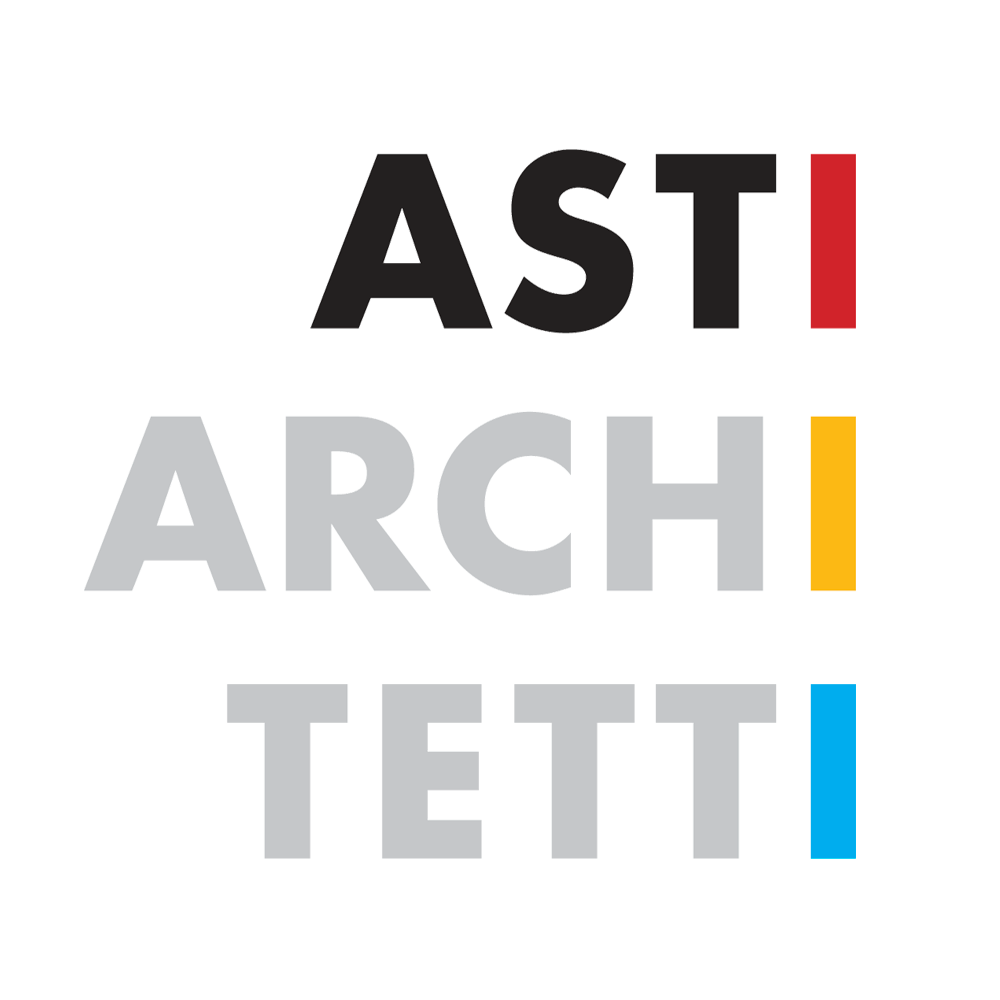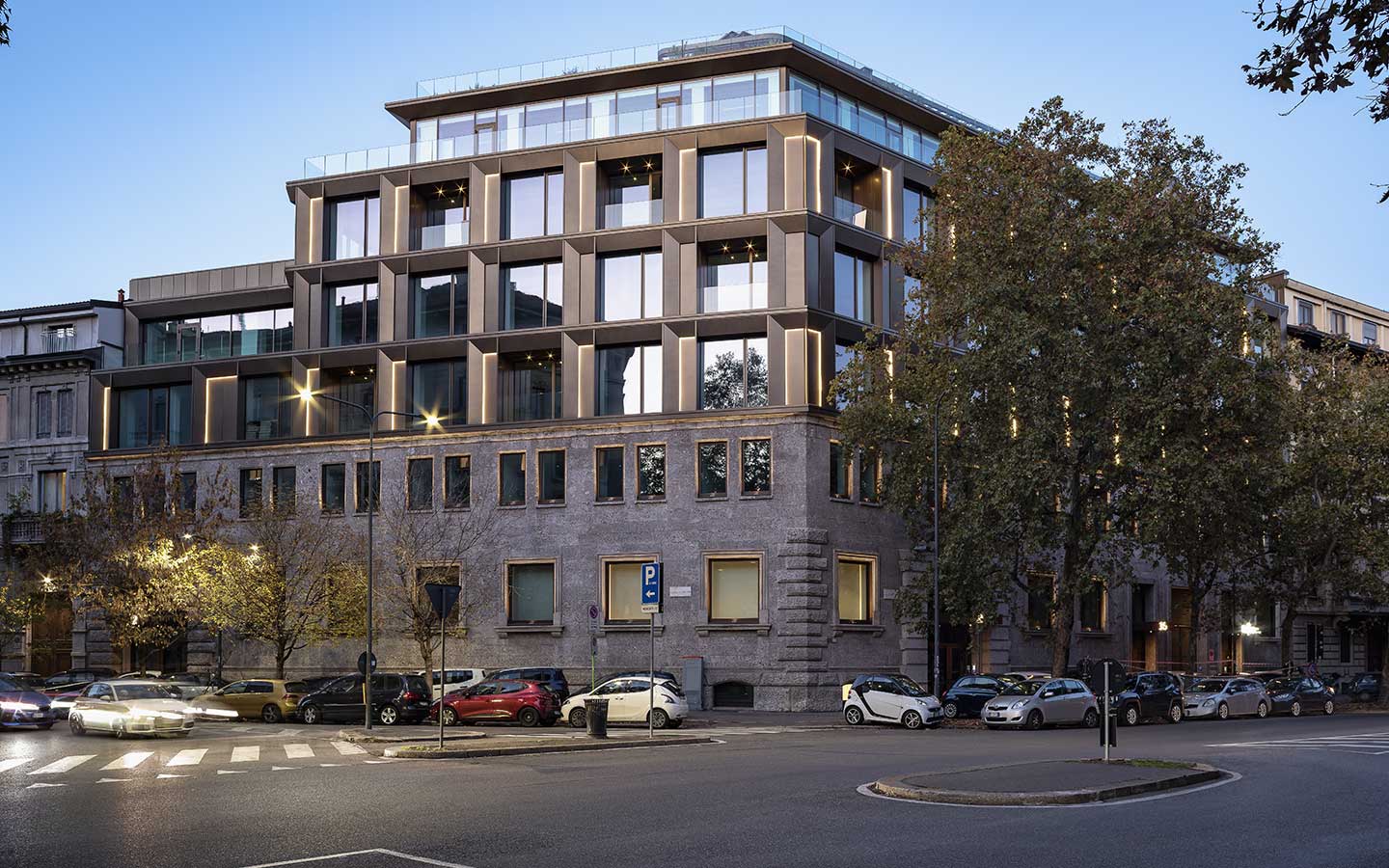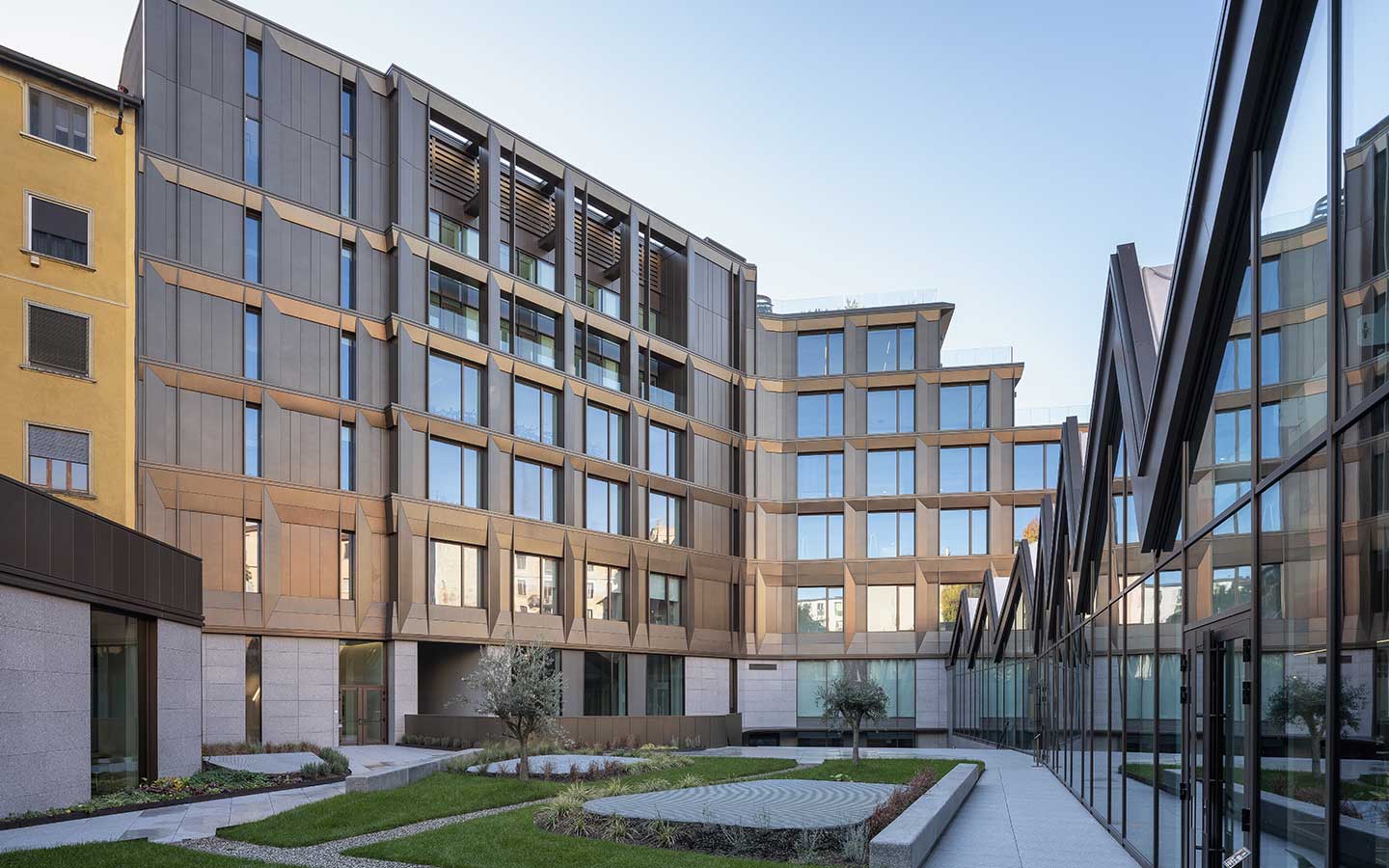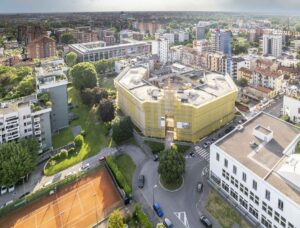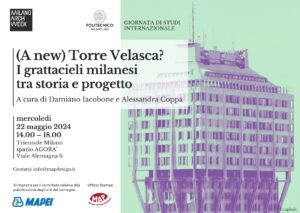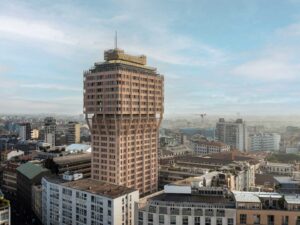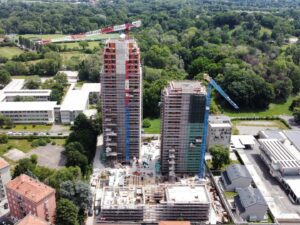MELZI d'ERIL 34
Asti Architetti designs a futuristic "campus" workspace in the Parco Sempione area to merge past and future in the name of "milanesità" (the Milanese style).
In the Parco Sempione area, Asti Architetti has just completed an innovative office complex.
This project is one of the few downtown office buildings in Milan, designed as a residential-working “campus” where the buildings on the inner courtyard create a unique space for high-quality living. It is a concept, an office based on the transversality of workspaces in the sense that the roofed areas, the open-air areas, the terraced areas, the common areas and the private areas are so interconnected that in the end you can work anywhere, Paolo Asti points out.
Located between Via Melzi d’Eril and Via Londonio- in a densely stratified urban fabric-Asti’s project has renovated the existing building, by modifying its height, to design an office building consisting of seven above-ground floors with an internal courtyard interconnected with high low-rise bodies along the perimeter.
To underplay the increase in verticality, the project building recovers in the initial part the height and slope of the roof of the adjacent building and rises by creating a series of terraces until it reaches its maximum height towards the public space, while still preserving the average heights of the existing buildings.
“The project’s challenge” Paolo Asti points out, “was to make the existing buildings, expressions of our roots, coexist with both modern and future times, firmly believing that the combination of these two opposite ends will allow us to experience contemporaneity at its best. Thus, an architecture capable of expressing its roots, preserving in the façade the ground junction, yet carrying on its shoulders a kind of glass and steel “spaceship” resting on the building.
The complex coexistence of these two languages in our opinion is very much in the spirit of “milanesità” (Milanese style), always able to make the past coexist with the present.
The project included conservative renovation of the first two floors and expansion on floors 3-4-5. Starting from the third floor, the structure is set back on the Via Campo Lodigiano side; the fifth and sixth floors are further set back, creating a system of terraces to distance themselves from the neighboring building and from which the eave and ridge alignments are taken. A series of photovoltaic panel arrays are placed on the roof.
One of the sides of the inner square was characterized by the presence of industrial sheds, which we emphasized by simplifying the features. We kept these sheds that were part of a workshop, and we made them transparent by visually connecting them with the inner courtyard which is going to be heavily planted. I hope that a sense of community will develop around the central court. It is a circular ring that gives the idea of the European square, Paolo Asti adds.
The façade design follows a language of formal cleanliness, simplification, and lightness.The fronts feature a new double-glazed structural glass façade from floor to ceiling that enhances the transparency of the building shell and allows full visual connection between workspaces and the outdoor environment.
The glazed modules design is overlaid with a compositional level marked out by intradoses, horizontal and vertical “pilasters” designed to fractionalize the building’s dimensions.
The lower part, which is in keeping with the alignments of the neighboring buildings, is characterized by the use of Gré stump stone, which better matches typical Milanese materials.
The upper part, on the other hand, is characterized by the use of burnished anodized aluminum vertical slats, which is a useful difference that helps identify the elevated parts and to fractionalize the size of the building.
The renovation project included systems designed with the aim of achieving the maximum energy performance. The technological systems were designed to ensure correct levels of comfort and use for the building as a whole.
Building Ownership: Ardian
Photos: Matteo Cirenei
